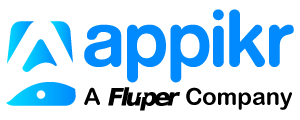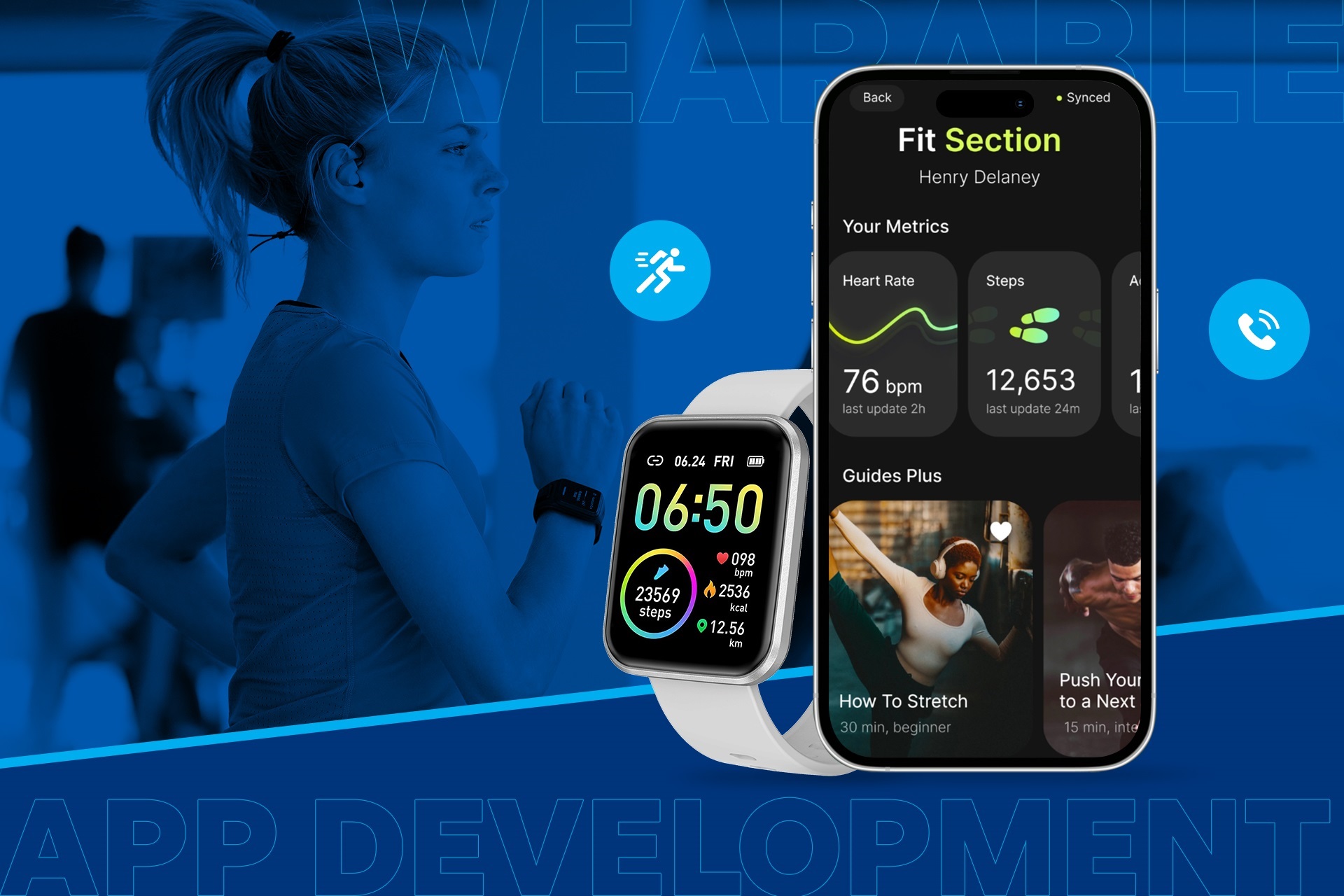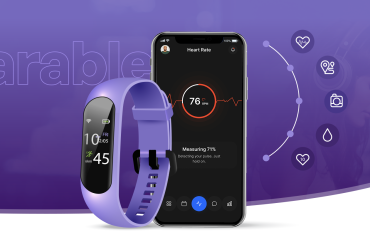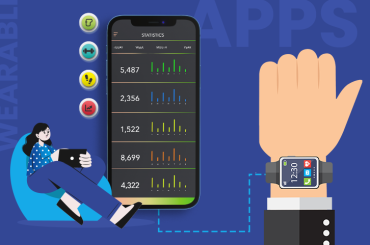One finds it difficult to envision a day without a smartphone, headphones, or smartwatch. Smartphones and other smart devices have become ubiquitous and deeply ingrained in our daily lives. It’s true, we adore convenience and anything else that makes life easier. There is no need to be surprised by the wearables market’s explosive growth in recent years. Future predictions predict a meteoric rise in the use of smartwatches, bracelets, health monitors, and other devices.
This year alone, there are already more than one billion wearable connected gadgets.
These wearables’ underlying technology is just as fascinating. It’s time to go deeper into the subject if you want to include wearables in your current application or are just interested in learning more. The manual provides answers to every query you can have regarding the creation of wearable applications.
What are Wearables?
Devices known as wearables are worn by users as clothing or accessories. In order for the network and the device to share data, these devices typically link to smartphones. Applications that use such wearable technology are known as “wearable applications.” These apps have access to the hardware and operating system of the device. These sensors gather the data, which they then send to the software that has been designed to provide the intended result.
There are several options available at the wearable app development company right now. Fitness bands, smartwatches, activity trackers, and even smart glasses have already become a substantial part of our daily life. In the following years, their popularity is anticipated to continue to rise.
Let’s quickly review the most common categories of wearable technology available today:
One of the most well-liked wearable technologies worldwide is the smartwatch. With a smartwatch, you won’t need to carry your smartphone around all the time. These gadgets perform a variety of functions, including sending and receiving messages, receiving notifications, setting alarms, monitoring physical activity, etc.
Fitness trackers are gadgets that keep track of physical activity, including steps taken, calories burnt, heart rate, sleep, and many other things. A portion of the capabilities enabled by smartphones, such as showing notifications, are now available on fitness trackers. The most obvious example of such gadgets is head-mounted displays or VR glasses. They can serve as monitors or show people information in augmented reality and virtual reality.
Smart rings by wearable app development companies are the most well-known example of smart jewelry. These tiny gadgets monitor physical activity and gather data that is sent to smartphones for additional user interaction.
Additionally, there are less common wearables like implanted devices and smart clothing.
The healthcare sector is extremely important to wearable technology. Patients who use glucose monitors can keep track of their blood sugar levels. To detect muscle activity, body temperature, chronic disorders, and much more, several diagnostic trackers are utilized. View the illustration below to see what information wearable technology can gather when employed in the healthcare sector.
Also, Read About:- How Much Does It Cost To Build A Nearshore Software In The Mexico?
The Most Promising Sectors for wearable app development services
The wearable app is useful for a company to target the demographic of customers who actively use wearables and desire functionality on them in addition to being trendy. Let’s take a look at some of the sectors that already employ wearable applications.
Healthcare
The healthcare sector benefits greatly from the use of wearable technology. They aid medical professionals in both disease diagnosis and patient health monitoring. These gadgets use several sensors to gather health information, track heart rate, glucose levels, etc. Improved healthcare services and early detection of even rare diseases are the key objectives of these applications. Examples include Hexoskin, Quardio, Aira Tech, and VeriSense.
Fitness
The most prevalent market applications are those for wearables. Users of fitness apps can keep tabs on their physical and mental well-being. Smartwatches and fitness trackers offer the capabilities required to monitor physical activity when working out, running, and performing daily duties, as well as to calculate calories, measure the distance traveled, and perform a variety of other functions. Examples include Nike+, Runkeeper, Google Fit, and Strava.
Outside Direction
Google Maps is a top option that works with all platforms and devices. Such solutions have a lot of potential because GPS, gyroscopes, and other technologies are being added to more and more smartwatches and fitness trackers. As a result, it is possible to create outdoor navigation programs that are totally independent of cell phones. Examples: Maps on Google
Messaging
Today, leaving your house without a smartphone doesn’t seem difficult thanks to smartwatches. Since messaging applications are readily available, they are much more beneficial because they can operate fully without being connected to a phone. Skype, Telegram, and other examples
Education
Smartphones are not the only type of wearable technology. These kinds of educational applications can be developed for augmented reality and virtual reality spectacles, like Google Glass. Students can explore the globe, closely examine chemicals, and learn about diseases and the human body using AR and VR. Examples include Ocean Rift, Mondly, and ImmerseMe.
Entertainment
One of the benefits of hiring wearable devices app development company is that people listen to music and podcasts while exercising, running, or commuting. There are various ways to go about creating the next Spotify for your smartwatch. For instance, Shazam, Apple Music, and Spotify.
Insurance
In the insurance sector, fraud is a major problem. If insurance firms could access the data from smartwatches and fitness trackers, wearable technology may be advantageous. In reality, there are already some of these solutions in place, such as the partnership between the activity tracker manufacturer Fitbit and the insurance provider UnitedHealthcare. Example: Achieve,
Fintech
Wearable technology can potentially be advantageous to the banking sector. NFC sensors are already a standard feature of smartwatches and fitness trackers, enabling contactless payments. Apple Pay and Google Pay, as examples.
Market and competitor research
After identifying your niche, you can do a more thorough market analysis. You can get started by figuring out which apps are common in your target area and examining their advantages and disadvantages.
You will gain a lot of knowledge about your rivals and develop ideas for how to offer a service that users would adore. Professionals with extensive knowledge and expertise in relevant domains are needed to work with smart technology. You have a lot of opportunities to discover a dream team because you have access to a worldwide talent pool. You can locate an offshore outsourcing business that meets the needs of your project based on your budget, requirements, culture, and other factors.
Also, Read About:- What are the Challenges & Benefits of Wearable App Development?
Development of Wearable Applications: Is it worthwhile to create a Wearable Application?
Future trends indicate that the adoption of wearable app development will increase. Keeping up with new technology and capturing market share with a worthwhile offering are clearly advantages. Wearable apps can enhance the user experience of your mobile app or serve as a stand-alone solution with special functionalities.



